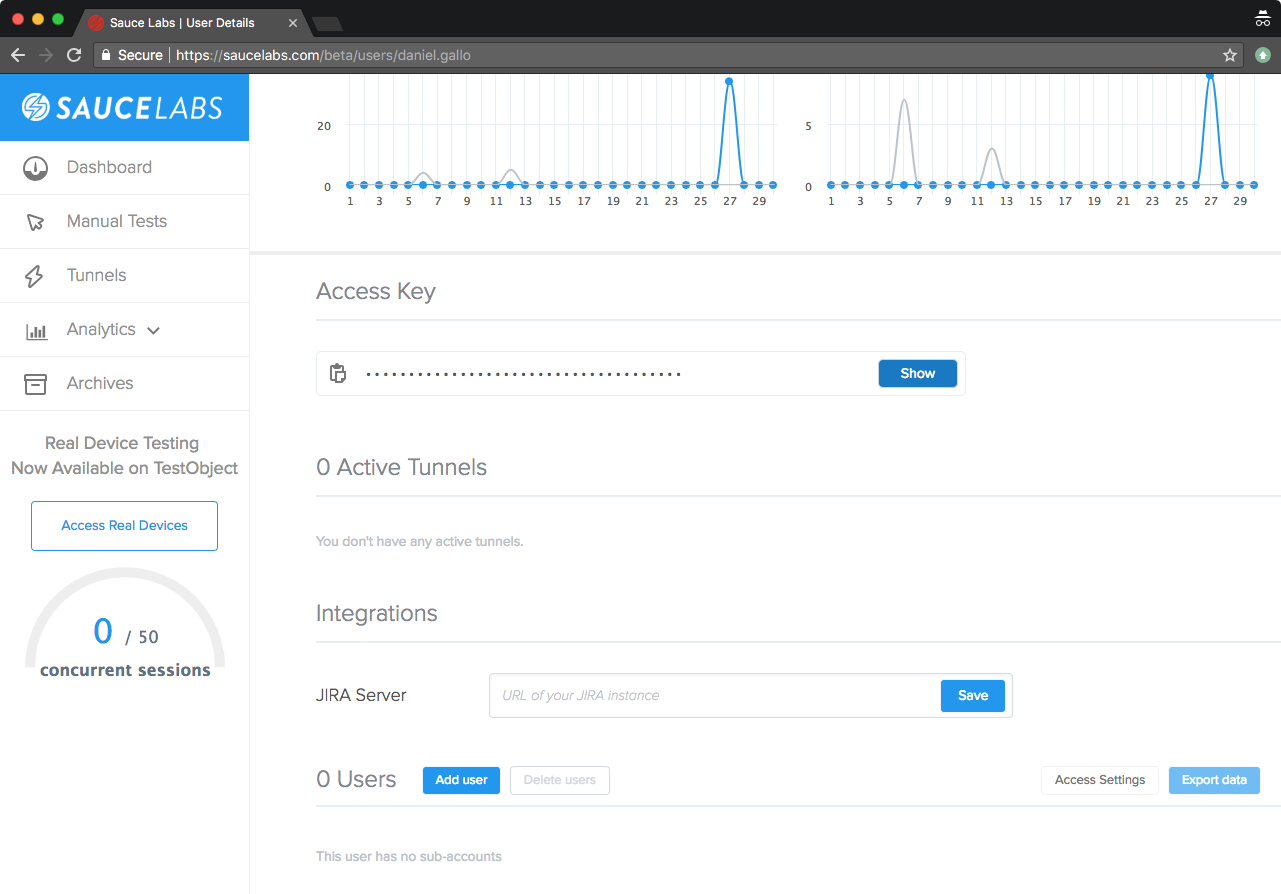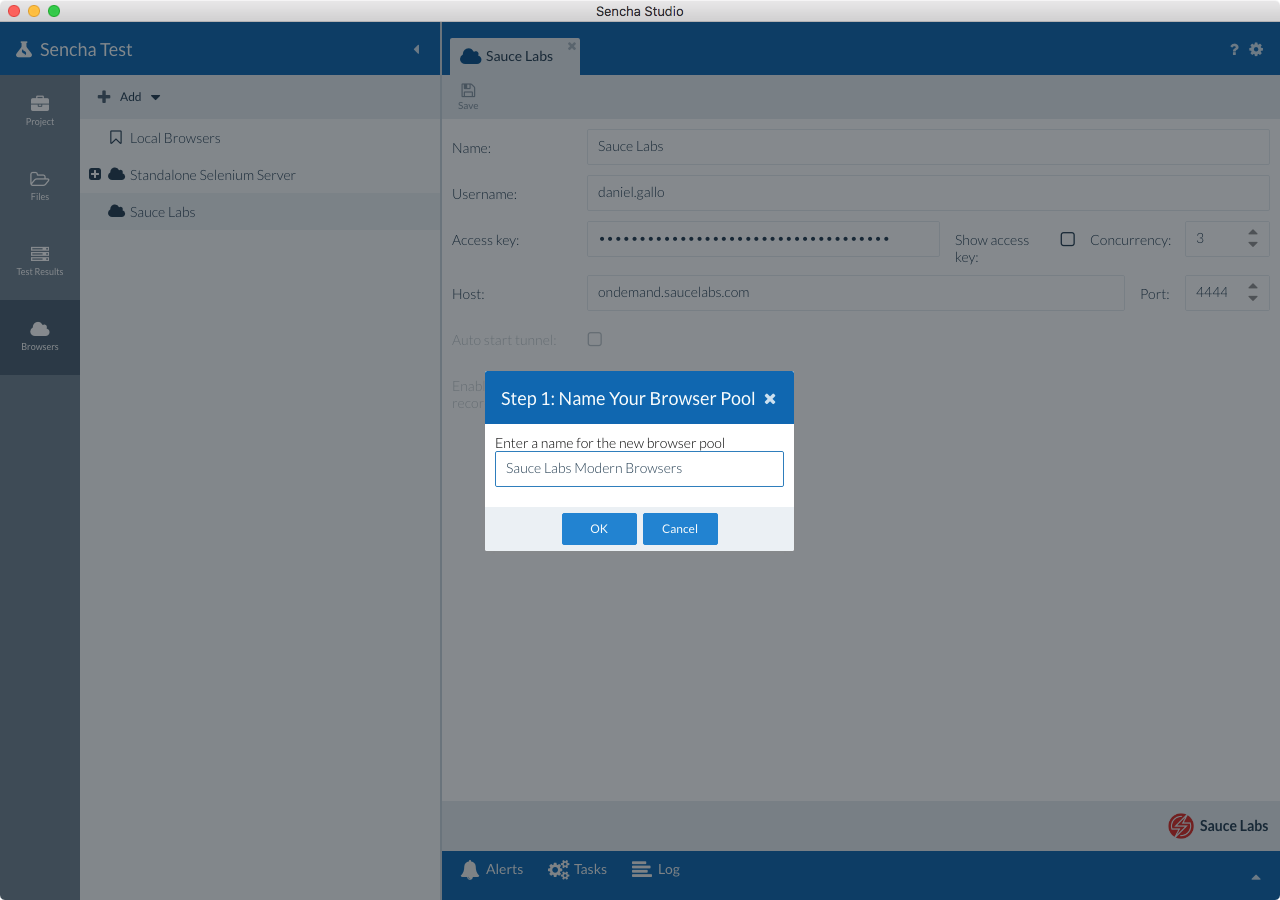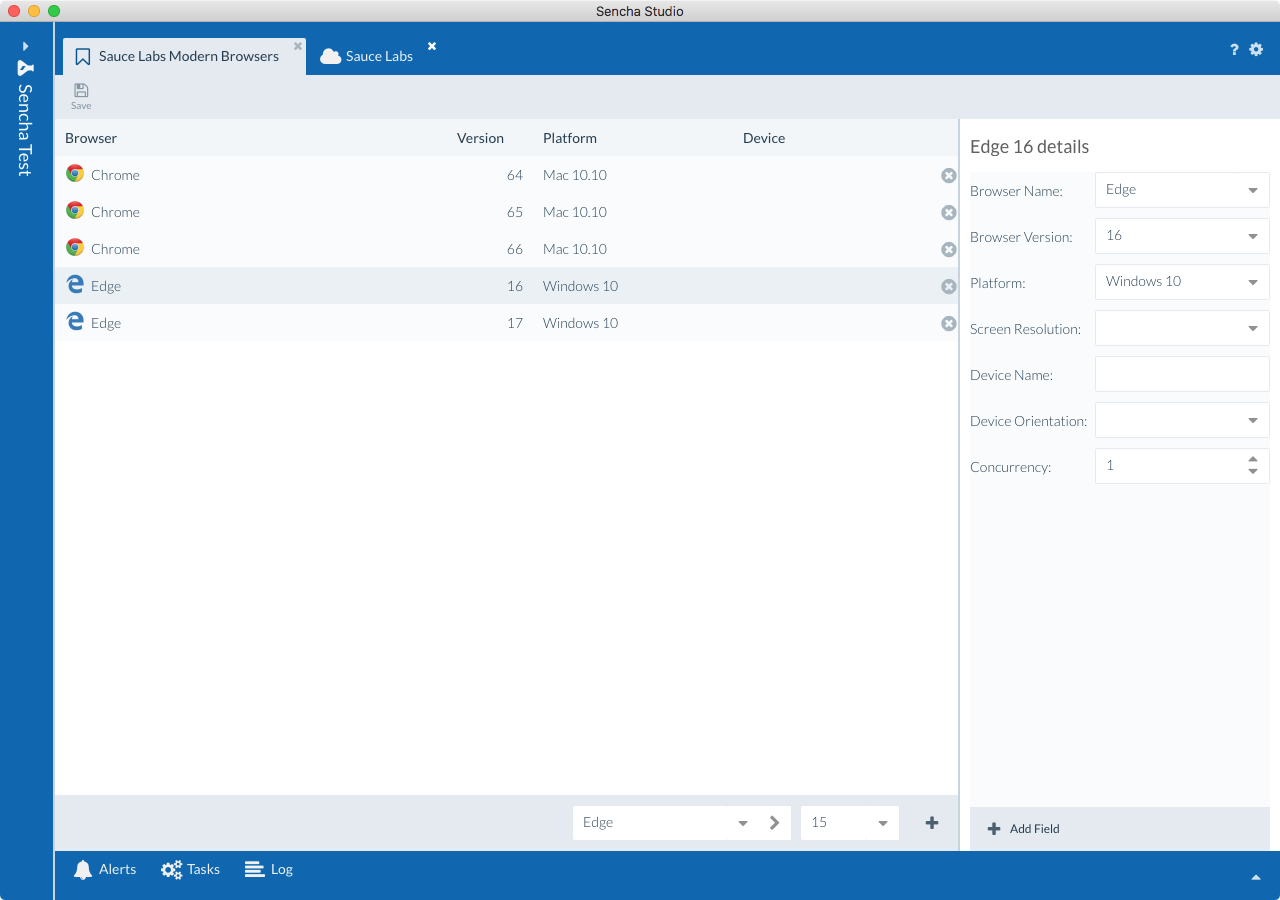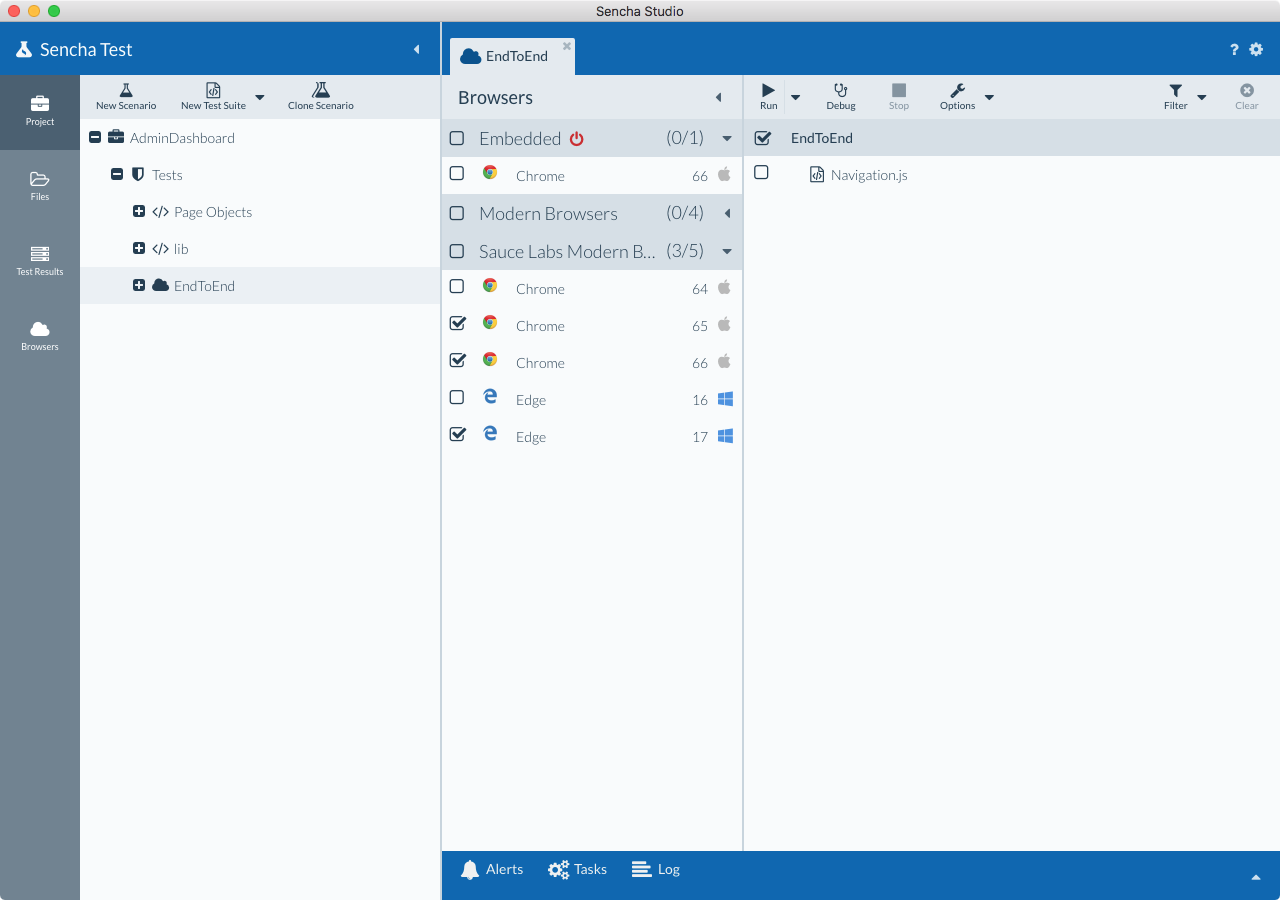Many classes have shortcut names used when creating (instantiating) a class with a
configuration object. The shortcut name is referred to as an alias (or xtype if the
class extends Ext.Component). The alias/xtype is listed next to the class name of
applicable classes for quick reference.
Framework classes or their members may be specified as private or protected. Else,
the class / member is public. Public, protected, and private are access
descriptors used to convey how and when the class or class member should be used.
Public classes and class members are available for use by any other class or application code and may be relied upon as a stable and persistent within major product versions. Public classes and members may safely be extended via a subclass.
Protected class members are stable public members intended to be used by the
owning class or its subclasses. Protected members may safely be extended via a subclass.
Private classes and class members are used internally by the framework and are not intended to be used by application developers. Private classes and members may change or be omitted from the framework at any time without notice and should not be relied upon in application logic.
static label next to the
method name. *See Static below.Below is an example class member that we can disect to show the syntax of a class member (the lookupComponent method as viewed from the Ext.button.Button class in this case).
Let's look at each part of the member row:
lookupComponent in this example)( item ) in this example)Ext.Component in this case). This may be omitted for methods that do not
return anything other than undefined or may display as multiple possible values
separated by a forward slash / signifying that what is returned may depend on the
results of the method call (i.e. a method may return a Component if a get method calls is
successful or false if unsuccessful which would be displayed as
Ext.Component/Boolean).PROTECTED in
this example - see the Flags section below)Ext.container.Container in this example). The source
class will be displayed as a blue link if the member originates from the current class
and gray if it is inherited from an ancestor or mixed-in class.view source in the example)item : Object in the example).undefined a "Returns" section
will note the type of class or object returned and a description (Ext.Component in the
example)Available since 3.4.0 - not pictured in
the example) just after the member descriptionDefaults to: false)The API documentation uses a number of flags to further commnicate the class member's function and intent. The label may be represented by a text label, an abbreviation, or an icon.
classInstance.method1().method2().etc();false is returned from
an event handler- Indicates a framework class
- A singleton framework class. *See the singleton flag for more information
- A component-type framework class (any class within the Ext JS framework that extends Ext.Component)
- Indicates that the class, member, or guide is new in the currently viewed version
- Indicates a class member of type config
- Indicates a class member of type property
- Indicates a class member of type
method
- Indicates a class member of type event
- Indicates a class member of type
theme variable
- Indicates a class member of type
theme mixin
- Indicates that the class, member, or guide is new in the currently viewed version
Just below the class name on an API doc page is a row of buttons corresponding to the types of members owned by the current class. Each button shows a count of members by type (this count is updated as filters are applied). Clicking the button will navigate you to that member section. Hovering over the member-type button will reveal a popup menu of all members of that type for quick navigation.
Getting and setter methods that correlate to a class config option will show up in the methods section as well as in the configs section of both the API doc and the member-type menus just beneath the config they work with. The getter and setter method documentation will be found in the config row for easy reference.
Your page history is kept in localstorage and displayed (using the available real estate) just below the top title bar. By default, the only search results shown are the pages matching the product / version you're currently viewing. You can expand what is displayed by clicking on the button on the right-hand side of the history bar and choosing the "All" radio option. This will show all recent pages in the history bar for all products / versions.
Within the history config menu you will also see a listing of your recent page visits. The results are filtered by the "Current Product / Version" and "All" radio options. Clicking on the button will clear the history bar as well as the history kept in local storage.
If "All" is selected in the history config menu the checkbox option for "Show product details in the history bar" will be enabled. When checked, the product/version for each historic page will show alongside the page name in the history bar. Hovering the cursor over the page names in the history bar will also show the product/version as a tooltip.
Both API docs and guides can be searched for using the search field at the top of the page.
On API doc pages there is also a filter input field that filters the member rows using the filter string. In addition to filtering by string you can filter the class members by access level, inheritance, and read only. This is done using the checkboxes at the top of the page.
The checkbox at the bottom of the API class navigation tree filters the class list to include or exclude private classes.
Clicking on an empty search field will show your last 10 searches for quick navigation.
Each API doc page (with the exception of Javascript primitives pages) has a menu view of metadata relating to that class. This metadata view will have one or more of the following:
Ext.button.Button class has an alternate class name of Ext.Button). Alternate class
names are commonly maintained for backward compatibility.Runnable examples (Fiddles) are expanded on a page by default. You can collapse and expand example code blocks individually using the arrow on the top-left of the code block. You can also toggle the collapse state of all examples using the toggle button on the top-right of the page. The toggle-all state will be remembered between page loads.
Class members are collapsed on a page by default. You can expand and collapse members using the arrow icon on the left of the member row or globally using the expand / collapse all toggle button top-right.
Viewing the docs on narrower screens or browsers will result in a view optimized for a smaller form factor. The primary differences between the desktop and "mobile" view are:
The class source can be viewed by clicking on the class name at the top of an API doc page. The source for class members can be viewed by clicking on the "view source" link on the right-hand side of the member row.
Sauce Labs is a cloud based platform for automated testing of web applications.
Rather than spending time and effort manually configuring and maintaining an internal browser farm, hosted browser farms such as Sauce Labs already have the infrastructure configured on their end, and you are able to quickly and easily leverage their various browser instances to test your web applications.
Navigate to the Sauce Labs website, and register for a trial if you don't already have an account.
After logging in to your Sauce Labs account, navigate to the My Account screen and scroll down to view your Access Key. Copy this key to the clipboard. You will need to use this key within Sencha Studio.
Note: If you don't populate the Access Key within Sencha Studio, you will be required to define the key when using Sencha Test CLI (stc).

In Sencha Studio, select the Browsers tab, and Add a configuration for Sauce Labs:

After adding the new Browser Farm, change the settings by specifying your Sauce Labs Username, Access Key, setting Concurrency to a desired number (e.g. 3) and clicking Save.
Note: By setting Concurrency on the farm to 3, this tells Sencha Test that 3 different browsers can be used simultaneously. If this was left at 1, only a single browser would be tested, and when that finishes only then would the next browser be started.

Once the settings have been populated, you can start to specify which browsers you
want to use. This is done by creating a Browser Pool. Right-click on the
Sauce Labs node in the tree and select the option to Add pool. Enter a meaningful name, such as
Sauce Labs Modern Browsers.

You will then be prompted to choose a location to save the configuration file for this Browser Pool. We recommend saving this in the Sencha Test workspace folder.
Select the newly added Browser Pool, and using the drop-down list at the bottom of the screen, select the browsers you want to add, e.g. Chrome. The Version drop-down list will default to select the latest version. Click the Add button to add this browser and version combination to the list. You can then optionally select which Platform you want this browser to run on, along with a desired screen resolution.

After making your changes, click the Save button.
Return to the Project tab, and select one of your Scenarios. The newly added list of Sauce Labs browsers will be displayed. Select the entire pool, or one or more browsers, to run your tests.

Due to Sauce Labs running as an external service, by default it can only access web apps that are publicly accessible (on the Internet). In order for Sauce Labs to access any internally hosted apps on your network, you will need to use the Sauce Connect Proxy.
The Sauce Connect Proxy opens a secure connection between a Sauce Labs virtual machine, and your local machine or network.
This proxy needs to be started before running your tests. After the secure tunnel is established, Sauce Labs will be able to resolve the IP address or host name of the app as defined in the Scenario settings.